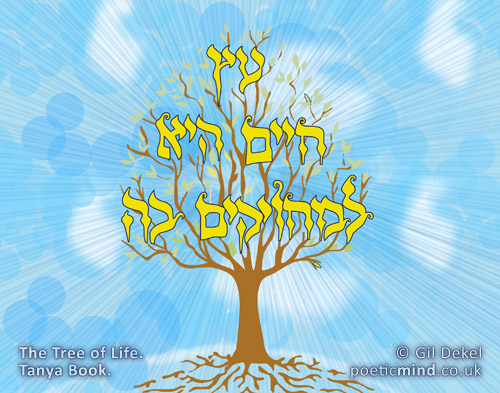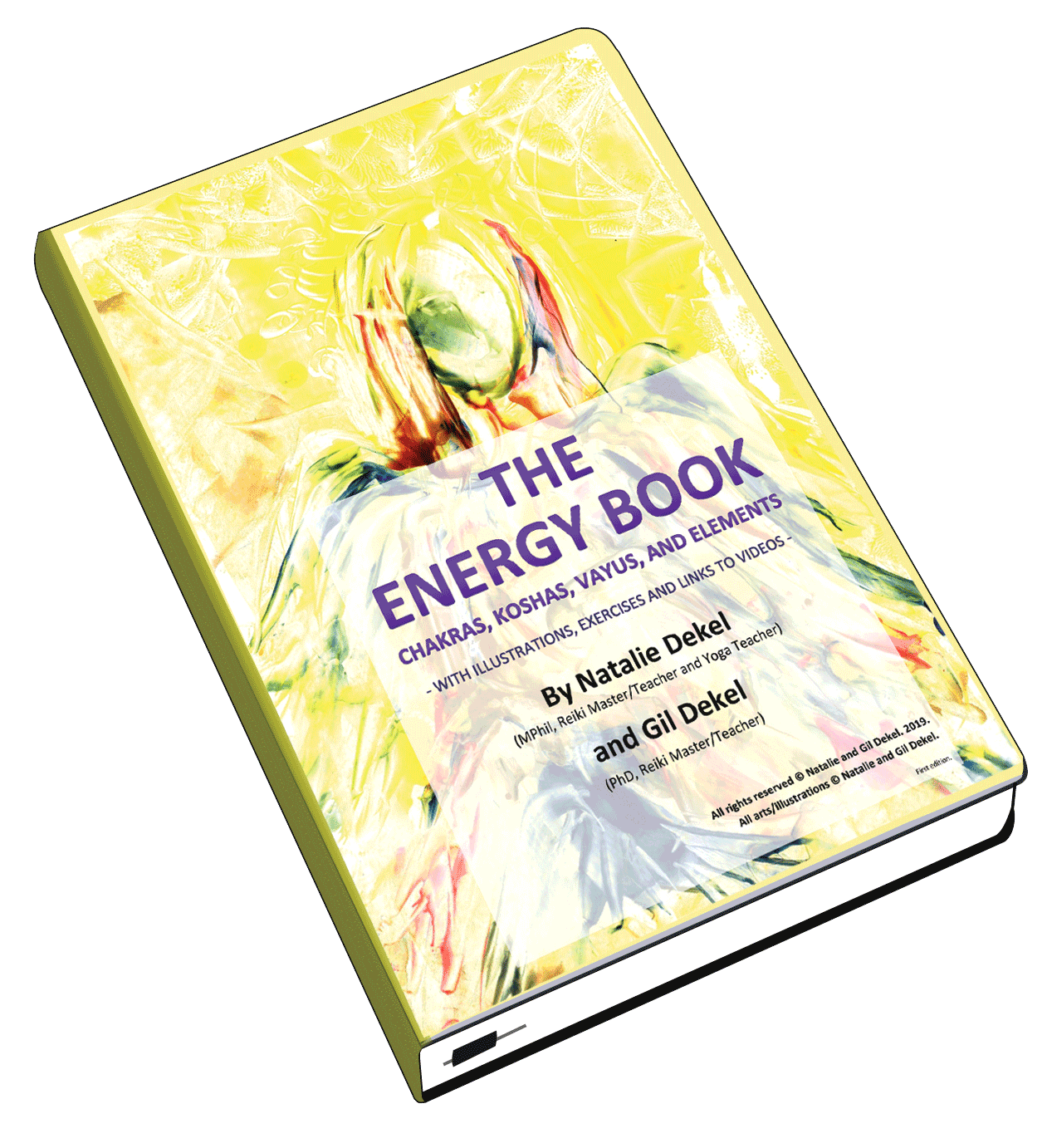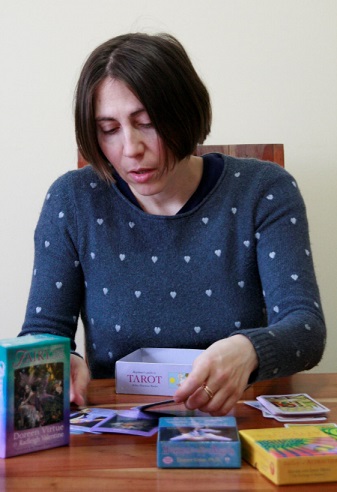
With Gil Dekel.
ספר ליקוטי אמרים
חלק ראשון
הנקרא בשם
ספר של בינונים
We start with the title page of the Tanya book, which is known by the name the ‘book of Beinonim’, or book of the average person, the intermediate, ‘Sefer Shel Beinonim’; in Hebrew: ספר של בינונים .
Traditionally, It is believed to be original work, but the author, Rebbe Shneur Zalman, Baal HaTanya רבי זלמן שניאור, בעל התניא whom we call the Alter Rebbe, was very humble, so he called this work ‘Likutei Amarim’, which means a collection of essays. The Alter Rebbe describes it as an anthology that he has put together, and disclaims ownership or authorship of the work.
It is the Book of the Beinonim, of the so-called average people. Of course, this is in contrast because we assume that people want to aspire to be great, and not just average. Many authors wrote ‘Sfarim’, books, about how a person should aspire to be a ‘Tzadik’ (a man of complete righteousness). But as we will get into this in the first few ‘Prakim’, chapters, we will see very clearly that according to the Alter Rebbe, being a Tzadik is not something to which everyone could aspire; it’s a unique quality which very few can attain; a bit like being a Cohen, it’s a Matana, a gift from God.
Being a ‘Beinoni’, however, is something that we all can aspire to: it’s not a ‘Rasha’, wicked; it’s not a Tzadik, a complete righteous person. Rather, it’s something that is in between – just normal.
מלוקט מפי ספרים ומפי סופרים קדושי עליון נ”ע
Here Alter Rebbe puts the sub-title which means: “This has been gathered from holy books and authors, may their souls be in Eden”. Tradition has it that those are books written by the Maharal of Prague המהר”ל מפראג (who is known for writing the Golem); and the Shelah HaKadosh, Rev Yashaya Halevy Horowitz השל”ח הקדוש, רב ישעיה הלוי הורוביץ who wrote the Shney Luhot HaBrit שני לוחות הברית .
These people were great thinkers and authorities in the Torat HaNigla (revealed Torah) and also in the Nistar (hidden, the mysterious teachings). When the alter Rabbi says ‘sfarim’- he refers to their books. When he says ‘Sofrim’ (authors) he refers to his teachers, who were the Maggid of Mezritch המגיד ממעזריטש , his immediate predecessor and teacher, and the Baal Shem Tov הבעל שם טוב .
The Alter Rebbe’s name is Schneur Zalman. Schne-Ur (pronounced ShNey-Or) means ‘two lights’. Tradition has it that he was the one who combined the Lithuanian’s analytical method of the study of the Talmud (the revealed part of the Torah), with the teaching of Baal Shem Tov and the Ari Ha-Kadosh האר”י הקדוש which is the innermost secret esoteric teachings of the Torah. Schneur Zalman was the one who combined the two lights together into the Chassidic Chabad (which is still very active movement today) and this is why he was given the name of ‘Schneur’.
The Tanya book was written in Imperial Russia and published in 1797. The Alter Rebbe was born in Liadi ליאדי and later lived in Li’ozna ליוז’נה , in White Russia.
מיוסד על פסוק כי קרוב אליך הדבר מאוד בפיך ובלבבך לעשותו.
Alter Rebbe goes on to explain that this book is based on a famous ‘Pasuk’ (verse) from the Torah. The Pasuk is from Sefer Dvarim, chapter 30, verse 14: “because this thing is very close to you indeed; in your mouth and in your heart to do it.”
In this Parasha (section of the Torah) in Dvarim, Moshe Rabenu משה רבינו is explaining: ‘don’t say the Torah is in the heavens and who’s going to take us up to heaven for it? Don’t say it’s Me’ever Layam, on the other side of the sea, and who’s going to cross the sea for us?’
In other words, the message of this Parasha is that to keep the Torah is something very close to people, meaning, it is achievable to the average person; therefore, “in your mouths and your hearts to do it”…
לבאר היטב איך הוא קרוב מאוד בדרך ארוכה וקצרה בעזה”י.
Here the Alter Rebbe says that the purpose of Tanya book is “to give a proper clarification as to how it is indeed very close to you, in a manner which is long and short”. It’s going to be a long way but it’s going to end up being the short way, since it will have a lasting effect.
In other words: Tanya is not a quick fix. It is a way to understand and learn, and this takes time. This can be explained with the following analogy: sometimes people go through a shortcut; they see the city and they take a direct route to it, only to find that there is a forest in between that stops them. On the other hand, sometimes we go the long way, we go around and it takes longer, but that really is the way to get there quicker. When you take the longer route, it can end up being the quickest journey.
The Alter Rebbe is saying here that the whole of Chassidis teaching is based on the belief that we have to do ‘Avodat HaShem’, the work of God. We can serve God from our innermost core essence, and that takes time. That’s something which you can’t do quickly. It’s not immediate. It’s got to be deep, in a process that starts with intellect and comes down to our emotions.
In the previous sentence the Rebbe said, “This thing is very close to you indeed, in your mouth and in your heart to do it” כי קרוב אליך הדבר מאוד בפיך ובלבבך לעשותו . Tradition has it that the Hebrew word ‘Picha’, פיך , mouth, is referring to ‘Dibur’, the act of speech. The word ‘Levavecha’, לבבך , heart, is referring to ‘Mahshava’, the thoughts we think – not the emotions, but thoughts – which are something no one can see, as thoughts are within us.
So, mouth – is the speech; Heart – is regarded as thoughts. And the word ‘La’asoto’, לעשותו , means to do it. In all, this Pasuk comes to highlight the importance of integrity between what we think (heart), say (mouth), and do (actions); and these three are the three garments of the soul.
The Tanya book suggests that the soul has three garments, three ‘Levushim’. The innermost garment of the soul is thought. Speech is the middle garment, and the outermost garment is action. In order to interact into the physical world the soul needs these three garments – thought, speech, and action; and as we’re going to learn, these are the things that we need to purify in order to become a ‘Beinoni’.
A Beinoni is someone who is in control not only of his actions but also of his speech and even thoughts. A person may not be completely pure inside, in the very make-up of his heart; but he at least makes sure that his speech, his thoughts and his actions are all correct and pure.
This is the opening title page of the Tanya book. The Rebbe also wrote a long and detailed ‘Hakdamah’, foreword, which starts with the ‘Haskama’, the approvals written by two of his colleagues who were also Talmidim (students) of the Maggid of Mezritch: Rev Yehudah Leib HaKohen הרב יהודה הלוי הכהן and Rev Meshulam Zusya רב משולם זוסיה. Both were contemporaries of the Alter Rebbe, and he would only have this book published with their blessing.
Then, at the bottom of page xvii, we have a further Haskama from his three sons: Dov Ber דב בער , Chayim Avraham חיים אברהם and Moshe משה .
The ‘Hakdamah’ (foreword/introduction) that follows, page xix, is very important introduction, where the Alter Rebbe sets out the basis of how writing this Sefer is going to be helping his disciples, his followers and people in future generations. He writes clearly here that the purpose of the Tanya book is to help people who need spiritual guidance in their lives.
20 Jan 2012.
© Gil Dekel. My thanks to my teachers.
Likkutei Amarim – Tanya, Bi-Lingual Edition, Revised, ISBN 0-8266-0400-5, ‘Kehot’ Publication Society, NY. 1993 [© 1984].
This lesson is for page xi in this book.


 - Reading with Natalie, book here...
- Reading with Natalie, book here...